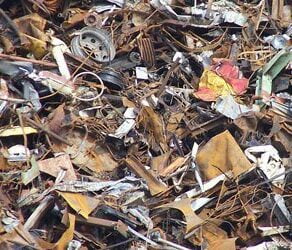Cleaning a cat’s litter box is not a glamorous task, but it is one that is necessary not only for your cat’s health, but also as encouragement for your cat to maintain the litter box habit. If a litter box becomes too dirty or smelly, your cat may decide that your carpet makes a more appealing bathroom area.
a cat’s litter box is not a glamorous task, but it is one that is necessary not only for your cat’s health, but also as encouragement for your cat to maintain the litter box habit. If a litter box becomes too dirty or smelly, your cat may decide that your carpet makes a more appealing bathroom area.
What You Will Need
- Slotted litter scoop
- Large trash bag
- Rubber gloves
- Respiratory mask
- Clean litter
- Dish soap
- Warm water
- Bucket or sink
- Old sponge or wash rag
- Old towel
- Cat box liner (optional)
SPECIAL NOTE: Any time you are handling or cleaning cat litter (especially if it contains fecal matter) you should use rubber gloves and a mask. This is due to the potential risk of toxoplasmosis, a virus that can be contracted through cat feces. This virus can be particularly dangerous for pregnant women. If you are pregnant you should NEVER clean kitty litter—even daily scooping can put you at risk! For more information on toxoplasmosis, its causes and effects, see the fact sheet issued by the Department of Health and Human Services Center for Disease Control.
The Kitty-Litter Cleaning Process
- At least once or twice a day, scoop any solid waste from the litter. While some people flush the waste in their toilet, we don’t recommend this. The litter material may clog your toilet over time or cause other plumbing problems. Ideally, you should place the waste in a disposable bag, seal it and deposit in your trash.
- If you use clumping litter, in addition to the solid waste, the urine will cause the litter to form clumps, which should also be scooped out and disposed of. Again, we don’t recommend flushing this type of waste, but rather it should be placed in a disposable bag, sealed and deposited in your trash. Be sure to replace the scooped up litter with fresh litter.
- Periodically, you need to change out the litter in the litter box. For standard (non-clumping) litter, this should be done at least once a week. For clumping litter, this can be done less often (usually once every three to four weeks).
- To change out the litter, open up a trash bag. If you use a cat box liner, simply lift the liner by the corners and carefully place the liner with the litter in the trash bag. Otherwise, if you do not have a liner, slide the mouth of the trash bag around the kitty litter box (i.e. as if you were going to place the whole box inside the bag). Making sure to hold the trash bag open, tilt the litter box so that all loose litter falls inside the trash bag, being careful not to breathe in the litter dust.
- With the box still inside the trash bag, use the scoop to gently scrape all remaining litter into the trash bag, again being careful not to breathe in the dust this may create.
- Immediately seal the trash bag and dispose of it either outside or in a sealed trash receptacle.
- Wash the litter box inside and out, using a sudsy mixture of warm water and dish soap. This can be done in the sink (preferably a laundry sink) or outside using a bucket. If your litter box has a cover or lid (a large dome that has a tunnel-like entrance for your cat to come in and out) make sure you wash this thoroughly as well.
- If there are any dried-on spots that are difficult to remove, such as from diarrhea, either soak the entire litter box for a while or wet a paper towel, press it over the area and let it sit for 10-15 minutes to soften the gunk so it can be scrubbed off with another paper towel.
- Rinse thoroughly with clean water (again, this can be done in the sink or outside using a garden hose or outdoor spout).
- Dry completely using an old towel. Make sure the litter box is completely dry before replacing the litter.
- Clean the floor area where you keep your litter box. There will likely be litter spillage or wet spots. The area should be swept first, removing any loose litter debris and then washed as you would normally wash your type of floor.
- If you use a cat box liner, place a liner in the litter box after it is dry, re-fill with clean litter (the depth of the litter should be 2 to 3 inches for an adult cat) and return it to its original location.
- If you do not use a cat box liner, pour the clean litter directly into the litter box (the depth of the litter should be 2 to 3 inches for an adult cat), and return it to its original location.
Additional Tips and Advice:
- Cats hate to be disturbed while using their litter box, so make sure your cat’s litter box is in a private, quiet location.
- Cats are creatures of habit, and if you decide to change the type of litter you are using, do it gradually. Replacing your current brand of litter with an entirely new brand all at once may discourage your cat from using the litter box. Each time you change the litter, gradually mix the old brand with the new brand, adding about 1/3 new litter for the first change, ½ new litter for the second change, ¾ new litter for third change, and by the time you reach the 4th change, you’re cat should be used to the new smell and texture, and you can use the new brand to fill the litter box.
- Do not use harsh or overly scented cleaning products when cleaning the litter box (i.e. cleaning sprays that you’d use on your counters, such as 409, or detergents that you’d use on your floor, such as Pine-Sol). The scents from these products may linger and cause your cat to avoid the litter box.
- Lemon and other citrus scented cleaning products, as well as pine scented prodcuts, should also be avoided as these items are toxic to cats and the smell of them may act as a deterrent.
- If you have a problem with litter sticking to the bottom of the box, wipe a thin layer of olive oil over the base of the box before replacing the litter the next time you wash it out. The oil will help to prevent the litter from sticking. Do NOT use PAM or other chemical cooking sprays as they are toxic to cats. There is a plain olive oil cooking spray (no other ingredients besides olive oil) that can be used if preferred.
- There are kitty litters that claim to be 100% dust-free or close to it. Consider switching to a dust-free litter as they are healthier for you when cleaning the box and healthier for your cat as well.
- If the litter box must be cleaned in the kitchen sink, be sure to fully disinfect the sink afterward.









Try a non-clay based litter, such as Swheat Scoop. Cats don’t mind and you don’t have to worry about the toxins in the dust, which could lead to liver failure in your kittens. Also, makes scooping daily a little less dangerous for you!
Look for Special Kitten flushable corn-based litter. It will clump with urine, but when put in the toilet it falls apart. This is one way to reduce your garbage and be earth friendly. Warning: if your child is in charge of the litter duties, make sure they do it every day. The lumps will fall apart after about 2 days. Also, if it is not cleaned regularly, the wet corn will begin to attract bugs.
I have asthma and I just cleaned the litter box. Guess what… I’m not dying, so the disease thing is pretty ridiculous!
To Anonymous: We are all dying. Guess what – perhaps you a little faster than others. My wife suffers from allergies and the cat box gets her going every day. That cannot be good.
Anonymous, your asthma has nothing to do with toxoplasmosis. It is a very serious problem if you have children or someone in your family with immune problems. For instance, chemotherapy will wipe out your white blood cells and make you vulnerable to it.
Toxoplasmosis is not transmitted via airborne dust. You have to physically get it into your mouth and down into your digestive tract in order to contract the disease. Furthermore, not EVERY cat carries it anyway.
Maryanna,
That is not correct. Toxoplasmosis can be transmitted via airborne dust, as well as other ways (blood transfusions, undercooked meat, poor water quality, etc.). However, your sentiment is correct – it is more likely that a person will contract Toxoplasmosis through eating undercooked meat or unwashed plants than through cleaning a litter box.
The reason the litter box is so commonly mentioned is because cats are the only direct host for the parasite (humans and other animals are only intermediate hosts). Also, cats show no symptoms of infection and the parasite produces millions of microscopic eggs that are so resilient, according to the College of Veterinary Medicine at Cornell University, they can survive for more than a year (in the litter box, on the walls, etc.). However, the cat only sheds these eggs for a week or two after contracting the parasite, which makes human contraction from the litter box less likely.
Source: Cornell University, College of Veterinary Medicine – Toxoplasmosis in Cats
Source: Canadian Centre for Occupational Health and Safety – Toxoplasmosis
Source: Centers for Disease Control and Prevention – Preventing Congenital Toxoplasmosis
This did not help at all.
This helped alot! And BTW: toxoplasmosis can linger in your body for up to a year! But the truth is, it’s rare. Also there is tests for it, so go get your cat tested if your that worried; the truth is, your more likely to get knocked down by a car than to be affected (or your baby) by this. But the actual routine helped.
From, Grace
Thanks. I have OCD and was like, “OMG is this for real.” Me and partner just cleaned the litter box out and have clay litter, but…I will be making sure that the surfaces are wiped down before placing the litter tray back so it’s all good. Just paranoid with all this going on. I guess as long as we make sure we are clean, then it isn’t a scary situation after all. One question: what is best for cleaning the poop scooper?
I would like to make the strongest possible statement re TOXO. I lived in an apt. in NYC when I was pregnant with my first child (now 48). We had a cat and I took care of the litter box in a very small space. For many months after the baby was born, we knew my child’s left eye was smaller than, and it didn’t track with, the right. We were fortunate enough to meet with the doctor who discovered TOXO in the Panama Canal. TOXO is a very dangerous virus to babies in utero (my child has lost all vision in the left eye, but fortunately no brain damage). We learned that if you have had it once, you are immune to future infections. ANY WOMAN PLANNING TO HAVE A BABY SHOULD HAVE A BLOOD TEST FOR THE TOXO ANTIBODY and avoid cat litter and undercooked meat!
Boy…it sure is a lucky thing that you went to that doctor in the Panama Canal…or was the toxo already at the Panama Canal and the baby caught it there while you were there?
Hi Vijay,
Toxo refers to Toxoplasmosis, a virus that is found in cat faeces. It’s the reason why pregnant women are often warned not to clean a cat’s litter box.
I always clean the kitten’s litter tray, in which I use the clay litter. I rinse it through with warm soapy water and a cloth, but I’ve came home today and saw the cloth in the sink. When I asked my daughter why it was there, she said she washed the few dishes up that where left in in the sink. To my horror, I told my daughter that the cloth she used was the litter tray cloth and she told me that herself and my other daughter ate from the dishes and cutlery she washed. Now I’m really worried. What should I do? Please reply asap.